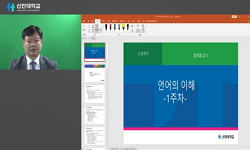The present paper focuses on the stylistic analysis of a poem Baarah-maah composed in Punjabi folk pattern, which is a part of a more widespread South Asian poetic tradition. This folk poetic tradition is different from the Sanskrit classical traditio...
http://chineseinput.net/에서 pinyin(병음)방식으로 중국어를 변환할 수 있습니다.
변환된 중국어를 복사하여 사용하시면 됩니다.
- 中文 을 입력하시려면 zhongwen을 입력하시고 space를누르시면됩니다.
- 北京 을 입력하시려면 beijing을 입력하시고 space를 누르시면 됩니다.
https://www.riss.kr/link?id=A99767206
- 저자
- 발행기관
- 학술지명
- 권호사항
-
발행연도
2010
-
작성언어
English
- 주제어
-
등재정보
KCI등재
-
자료형태
학술저널
-
수록면
117-143(27쪽)
- 제공처
-
0
상세조회 -
0
다운로드
부가정보
다국어 초록 (Multilingual Abstract)
The present paper focuses on the stylistic analysis of a poem Baarah-maah composed in Punjabi folk pattern, which is a part of a more widespread South Asian poetic tradition. This folk poetic tradition is different from the Sanskrit classical tradition for it is composed around the fears and joys, and daily life routines of the ordinary rural folk. The poem is analyzed in the stylistic mode of analysis which takes the language of the poem as the base and reveals in the process the stylistic significations/connotations of the poem. The texture of the poem is highlighted through the different levels of language organization namely, the phonological, lexical, syntactic and the figurative levels. The study of the poem reveals not only highlights the joys and sorrows of ordinary people in the context of separation and ultimate reunion with the loved one but also reveals the stylistic devices that are popular in Punjabi folk literature. The twelve-month pattern of the poem signifies not only the changing seasons but more significantly, the changing emotions of the suffering beloved.
목차 (Table of Contents)
- Abstract
- Ⅰ. Introduction
- Ⅱ. Rationale for the stylistic analysis
- Ⅲ. Phonological Level
- Ⅳ. Lexical Level
- Abstract
- Ⅰ. Introduction
- Ⅱ. Rationale for the stylistic analysis
- Ⅲ. Phonological Level
- Ⅳ. Lexical Level
- V. Syntactic Level
- VI. Figurative Level
- Ⅶ. Conclusion
- References
동일학술지(권/호) 다른 논문
-
- 한국외국어대학교 인도연구소
- 노영자(Noh, Young-Cha)
- 2010
- KCI등재
-
- 한국외국어대학교 인도연구소
- 이명무(Lee, Myung-Moo)
- 2010
- KCI등재
-
- 한국외국어대학교 인도연구소
- 임근동(Lim, Geun-Dong)
- 2010
- KCI등재
-
- 한국외국어대학교 인도연구소
- 황순일(Hwang, Soon-Il)
- 2010
- KCI등재





 DBpia
DBpia






